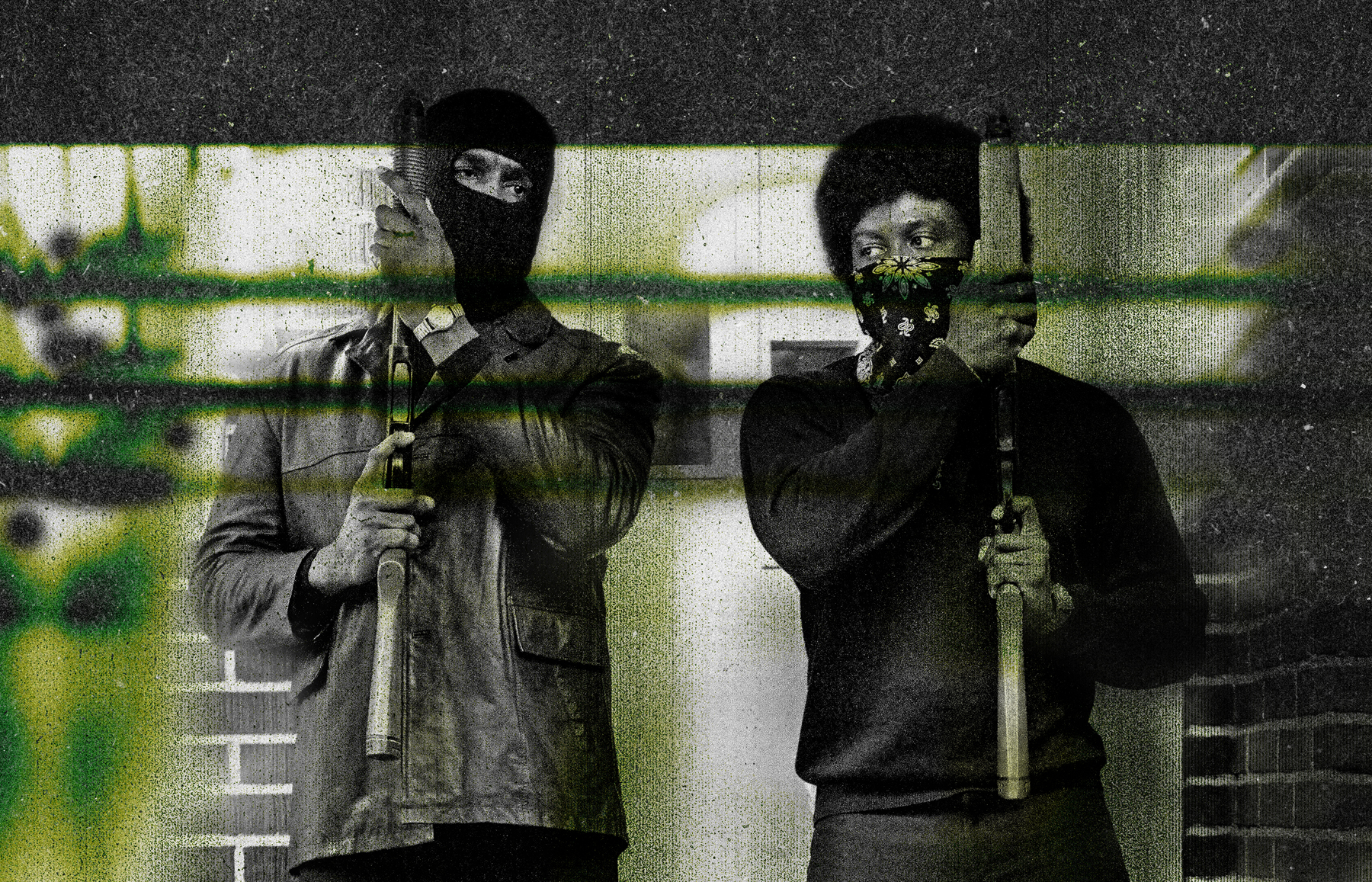Directors of Photography Joe “Jody” Williams and Michael Watson mix 16mm Ektachrome with 8K digital capture for the period sports/crime drama Fight Night: The Million Dollar Heist
by Ted Elrick / Photos by Eli Joshua Adé, Parrish Lewis, Fernando Decillis / Peacock
In 1970, Muhammed Ali was heading for a comeback fight with Jerry Quarry. Ali had been stripped of his heavyweight crown and banned from boxing for refusing to be drafted into the military and going to Vietnam in his athletic prime.
Anticipation and money were high leading into the fight, to be held in Atlanta on October 26, with the winner ultimately facing then-heavyweight-champ Joe Frazier. That’s the background for the eight-part Peacock miniseries Fight Night: The Million Dollar Heist, adapted by writer Shaye Ogbonna (The Chi, God’s Country) from the popular true-crime podcast series by Jeff Keating and Jim Roberts. The series is directed by 2005 Sundance Audience Award winner Craig Brewer (Hustle & Flow, Dolemite Is My Name, Coming 2 America), Carl Seaton (Godfather of Harlem), and Tanya Hamilton (Winning Time: The Rise of the Lakers Dynasty).
At the center of the story is Gordon “Chicken Man” Williams (Kevin Hart), a streetwise hustler whose ambitions and talk put him on a collision course with such ruthless criminals as Frank Moten (Samuel L. Jackson). Following the heist, and as the body count rises, pioneering Black detective J.D. Hudson (Don Cheadle) is thrust into a high-stakes cat-and-mouse game and a race against time to clear Chicken Man’s name. Also in the series are Terrence Howard, Exie Booker, Atkins Estimond and Ananda Palmore. The show was filmed in Atlanta in many of the same locations where the events took place.
Fight Night used alternating directors of photography: Joe “Jody” Williams (Empire, Coming 2 America, B-Boy Blues) and Michael Watson (Six Triple Eight). Williams, whose roots are in analog film capture, says the original goal was to shoot all the celebrity moments in 16-mm film that had “look-alikes” in scenes that were “press worthy, [for example], celebrity arrivals to the fight and any historical news coverage scenes.” He describes how “story shifts and scheduling had us pivot to only shooting the news coverage scenes. But it’s still a thrill for the camera and lighting department to even roll a few hundred feet of film.”
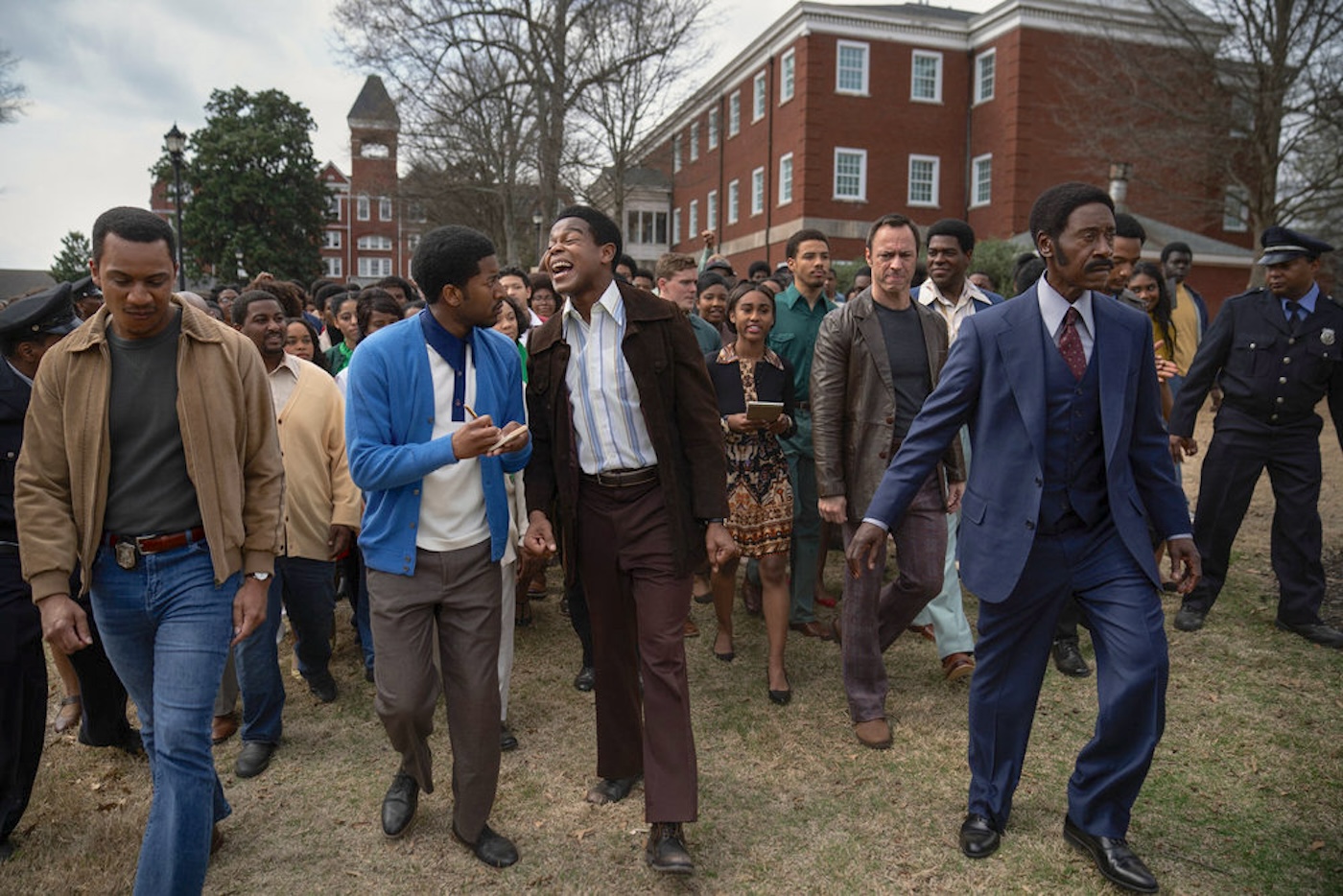
Williams says he did tests with 7294 (100D Ektachrome) and 7207 (Vision 250D). “We shot both under high sun in and out of shade because that’s the real Atlanta sky,” he explains. “In the spring, it can be like Miami with extreme cloud shifts. I continue to fight for some way to integrate burning some film into everything I do. Mike Brown at Kodak and both of my favorite camera houses – Keslow in Atlanta and Panavision – are always supportive to help make these things work for me and other filmmakers. I chose Sony VENICE 2 because I was a VENICE 1 fan and hadn’t shot with the 2; plus, my DIT Joe Dare suggested we go for 8K, which was also a first for me.”
“I told Jody he should consider the VENICE 2,” Dare recounts, “because of the resolution and the dual exposure. You can boost it up and get great shadow details, while maintaining the highlight details with the dual exposure, like [the scenes] in the Dolphin Club and some of the exteriors. There’s still some texture, but it’s not falling away in a pitch-black night.”
For lenses, the production used Blackwing7 Primes: the Transient and Expressive Tunings. As Dare adds: “The different tunings handle the light differently. At first, I was concerned that having a mixed set of lenses would mean they behave very differently. But there were circumstances where you wanted more or less contrast. Certainly in a period piece, that can be very helpful, and it just felt a little more filmic and glamorous.” The team also employed MasterBuilt zooms because, as Williams notes, “they tested and matched the best with the Tribe7s.”
Each of the characters had a camera aesthetic. Hart’s Chicken Man, who, as a numbers runner, is full of energy and constantly hustling, required a lot of handheld camera work. For Cheadle’s police detective, who was a former military person, the camera was more regimented, and the color palette was a cleaner blue. “With the gangsters, we wanted to play a little greener and [with some] shadows, for the thirst for money, envy and greed,” states Williams. As Chief Lighting Technician Carl Johnson adds: “We used a lot of practical lighting to keep things moody because of the show’s intensity. Cheadle’s character was all about keeping everything cool, and for gangsters like Jackson, everything was warm, so when the two collided, we mixed the colors – the gangster side and his side.” The Foundation’s Gareth Cook was the DI colorist, and Christian Soleta, with NBC Post, was the dailies colorist.

According to Watson, in addition to the practical locations, many sets were built and filmed at Assembly Studios in Atlanta. He credits New York-based Production Designer Toni Barton for recreating the 1970s look in her sets and adjusting practical locations. “One wouldn’t think you had to adjust that much, as the 1970s feels relatively recent,” Watson shares. “But as Toni said, for example, there were no bike lanes on the roads in the 1970s, so those had to be masked for exteriors.” As Barton describes: “You could stand in front of one building, and maybe that building looks like we’re in October/November of 1970. But then you go to the corner, and there’s a modern fire hydrant and a billboard for a cell phone. There wasn’t a single place we walked into that did not need major changes.
“It was funny,” Barton continues. “The location assistants would say: ‘Well, Toni, I think you’ll like this house, but then there’s a recently painted slate-blue house next door. They were brick originally, and then people painted over the brick with gray, white, or blue paint,’ and I’m like, we can’t shoot this because I can’t turn to the right. I don’t control the camera. The DP does. The house where the heist takes place, the outside of it, was essential. So, we had to adjust many of the nearby houses. Replace the doors on garages, add metal awnings, repaint wrought iron, in that Atlanta neighborhood.”
Barton, who came to Atlanta a week into prep, began collaborating with Williams early on. “We started talking about what’s essential, about lighting practicals and the color palette,” she adds. “It was a group collaboration with Jody and the costume designer, Ernesto Martinez. We talked about where the light is coming from, and even windows, what’s practical, what we need to accentuate, what’s essential, and what will not take us out of 1970. I’m grateful to Jody for sharing what was essential so we could get things right.”
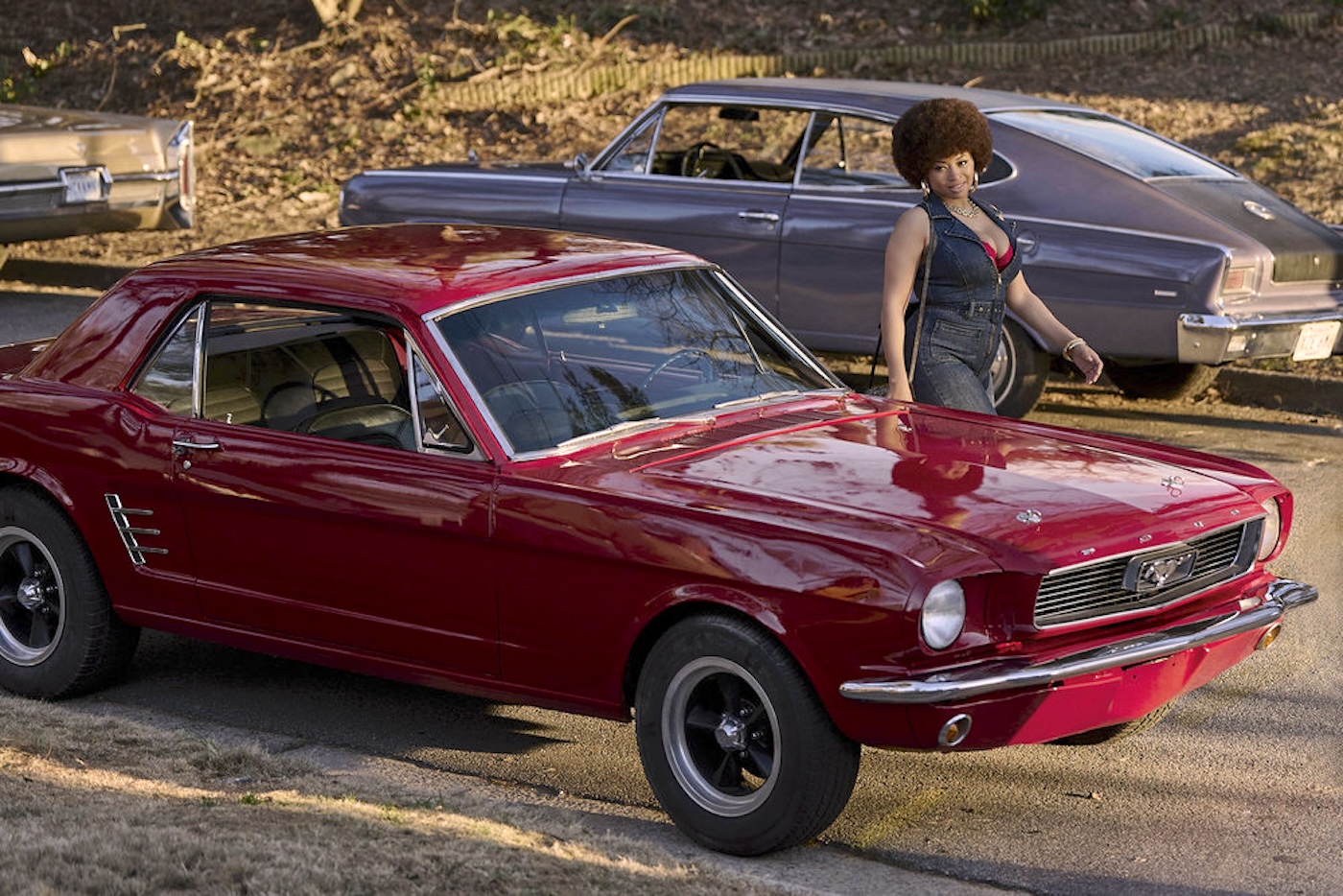
Chief Lighting Technician Johnson says that when he discovered all the characters in Fight Night were based on real people, he felt honored to be involved. Seeing all the talent on set, Johnson was reminded of the film Harlem Nights, whose cast included Eddie Murphy, Richard Pryor and Redd Foxx. “We had all the big hitters, just like Harlem Nights,” Johnson says. “You have Sam, Terrence Howard and Kevin Hart all on set for the first time they’re in their costumes and everything, wigs and all. I said ‘Wow, I said this is Harlem Nights all over again,’ and Jody looked at me, smiled, and said, ‘You’re right. This is epic.’”
The toughest set to work in, according to Johnson, was Chicken Man’s basement party house. “It was built on stage, but there were a lot of extras down there – girls counting money, hookers walking around – very challenging because we motivated everything with practical lighting, and there were only so many angles we could get in that set. But we made it work. We probably spent two and a half weeks on that set.”
Because of the tight television schedule, there wasn’t a lot of time for rehearsals. Watson says the most rehearsal time was with Dexter Darden, who played Muhammed Ali, as the fight with Jerry Quarry had to ring true with not only sports aficionados but everyone who has heard the real Ali in interviews and talk shows. “Dexter did a fair amount of one-on-one training before even getting into the ring for that scene,” Watson recalls. “I’m always in awe when I see a beautiful performance, because it’s so hard to do! I don’t think the average individual truly appreciates the place actors go to within themselves.”
On working with actors, A-Camera Operator Xavier “X” Thompson says he takes pride in his ability to anticipate and see ahead. “Once I see the blocking, even if it’s with the regular actors or the stand-ins, I can kind of foresee what’s going to happen,” Thompson shares. “I have good spatial awareness, so I don’t necessarily have to walk through it with the actual camera; I can walk through it with my hand and know exactly what’s needed for the shot.”
Thompson notes that he’s worked with A-Camera 1st AC Jason Bonner before, on the hit series Empire. “This is my first full-time show with Jason,” he continues. “I feel like the relationship between the operator and the first is special. You might catch something the actors are doing that you want to move in more on, and your first senses that from you. Jason is a wizard with focus. Once he sees what’s happening, he doesn’t need notes. He’s sharp with his instincts and feeling my camera movement.”
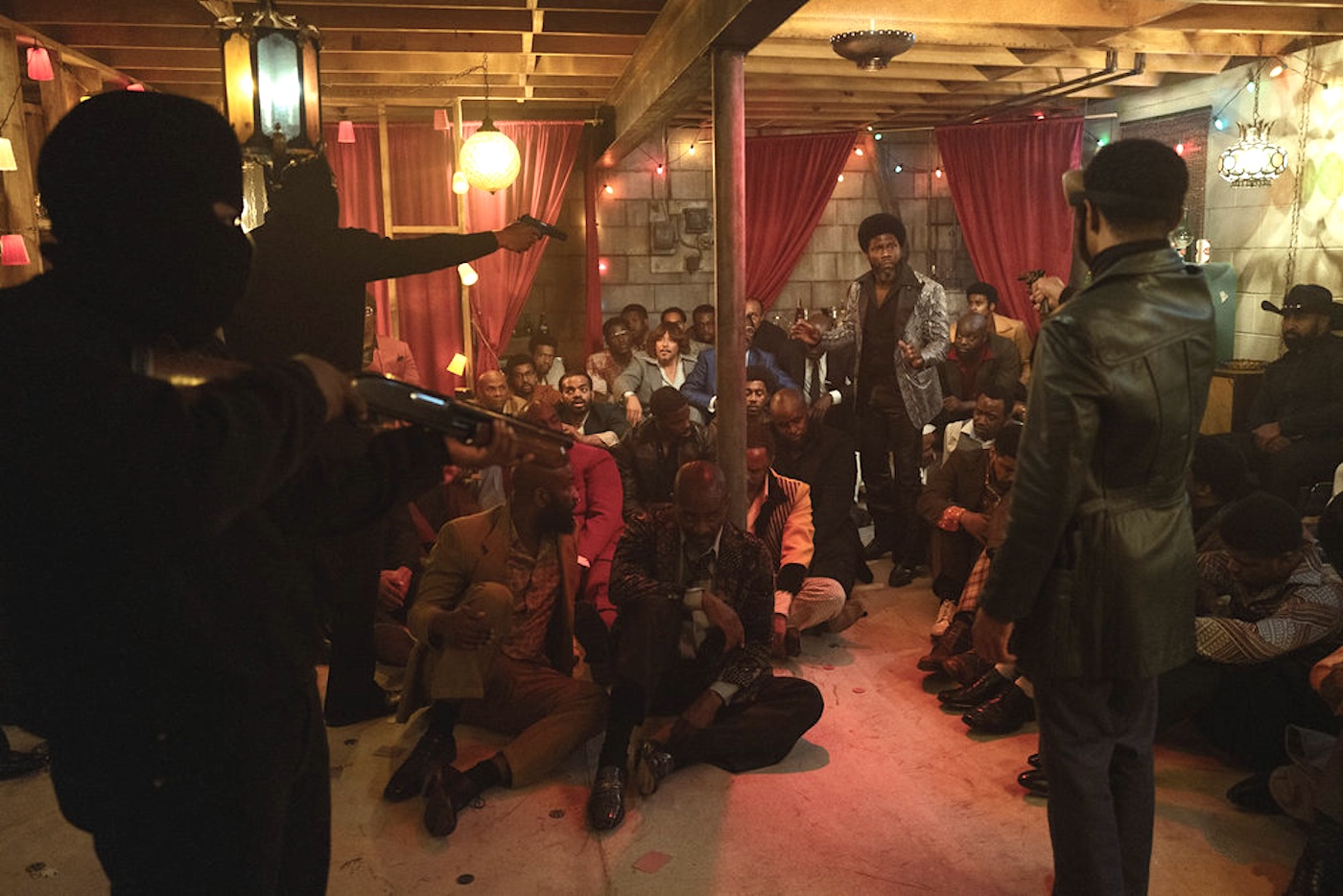
One location proved particularly challenging. The story has the men who pull off the heist fleeing to Jekyll Island, GA, where they discover a segregated beach resort called the Dolphin Club, that had been shut down for several years. The original Dolphin Club had been demolished, so Barton set about recreating it – interior and exterior – at a warehouse on a military base. “The Greens Department added sand for a beach and landscaping trees to make it look like we were on Jekyll Island,” she explains. “The VFX team added the water. We built an entire marquee and facade on the outside that looks like any marquee from a Chitlin Circuit club of that time. We also put in a 100-foot-long horseshoe bar and a massive working stone fireplace that goes all the way up to the rafters. The inside looked like cut stone, and it had a hearth that you could sit on. It went out to the back of the window. I had many conversations with Michael [Watson], as it’s supposed to be abandoned. So, we brought in leaves, boarded up the windows, and turned a lot of the furniture upside down.”
As Watson tells it: “It turned out to be an incredibly challenging place to shoot because they had no power. So, the only source of lighting came from a fireplace. Imagine a Greystoke-like fireplace and moonlight for the night interiors coming through the cracks in the boards covering the windows. It was a massive set and interesting to approach with only those two particular sources. Carl Johnson, Jr., and I spent a lot of days planning how we were going to approach this.”
Johnson says they hung space lights in the ceiling, with a certain percentage of those lights in the moonlight color. “The ones that were closer had a flicker gag that created a fire effect. It was very challenging, in part because we were worried about them not being as high as we wanted them to be. So, I had to make the skirts a lot smaller, so we could still be able to give that same soft effect that we needed. It was a fun set to light.”
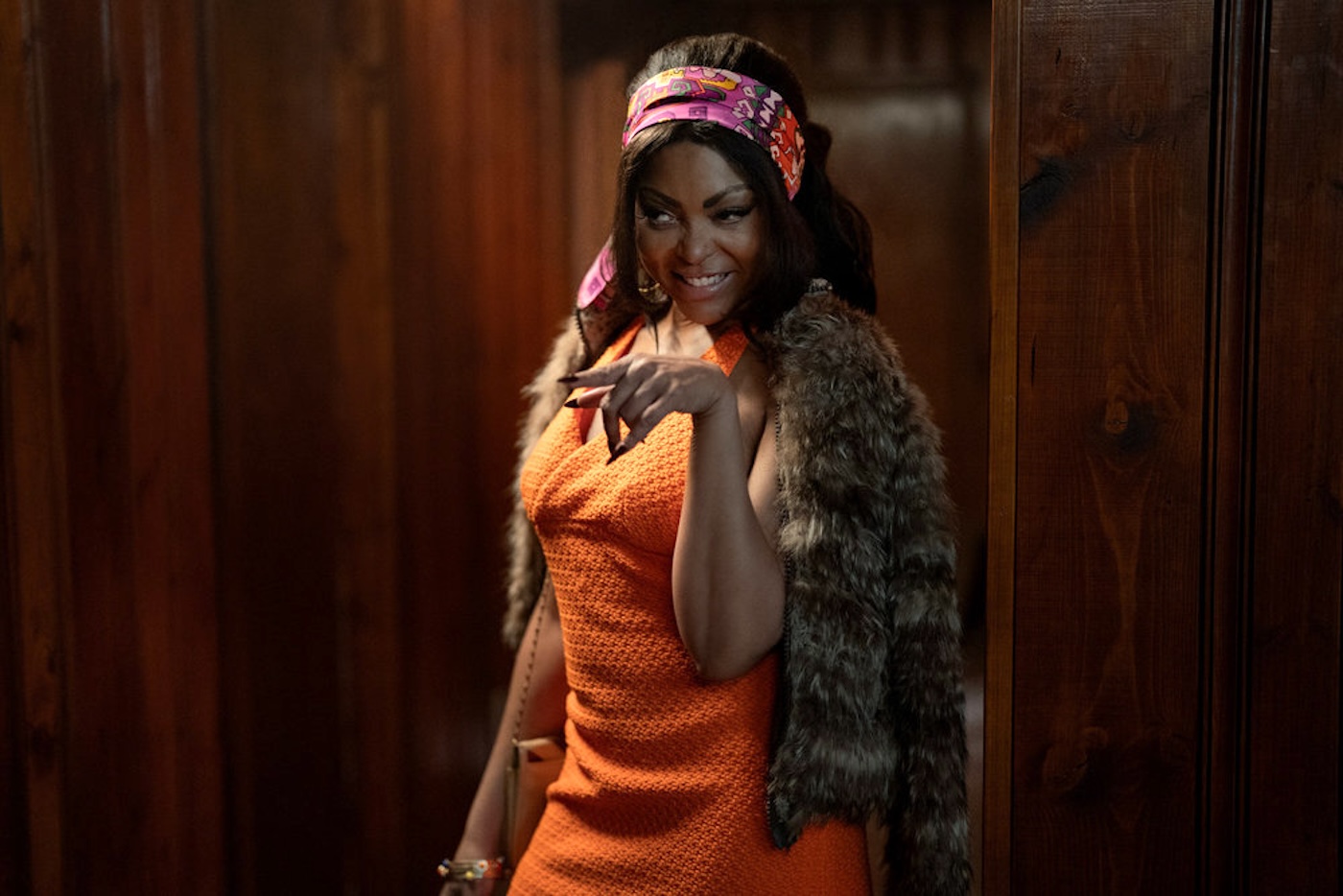
Watson says another challenging sequence was a day-for-night that required some specialty lighting for night interiors. One of the actors was a minor, which meant the crew had a limited time period to shoot the scene. According to Watson, Key Grip Alexander Eremin and his crew rigged-up night exteriors on a façade, about 20 by 40 feet, made of speed rail and Duvetyn solids that could be moved in place when shooting day for night.
Williams says that the cinematography should never get in the way of the storytelling. “My thing was always to not be too presumptuous with my visual approach,” he says. “I only want to augment without being overbearing. If you start looking at the thing, then you’re not listening and feeling the actors move through the space. It should all work in concert.
“One of my favorite DP’s is John Toll, who, like me, is from Cleveland, Ohio,” Williams continues. “I worked for John as an operator. None of his work is overly dynamic. It’s more like, these are beautiful shots, the composition and lighting are great, but you almost don’t even notice. It’s matter-of-fact. And what I really appreciate about John is how he manages the camera department.
“That’s what’s important to me. Getting folks together, collaborating, and making sure they have a good attitude so they can do their best for the project,” Williams concludes. “If I’m micromanaging somebody – putting the focus every single day on every single shot or how you pan or tilt every single time – then that [crewmember] is not getting a chance to engage the process to respond and react. If my team is thinking about what Jody said all the time, it’s like: ‘Do I need to do this?’ I want everyone to react and respond as filmmakers, from their own place. I want them to feel confident in what they already do so well.”
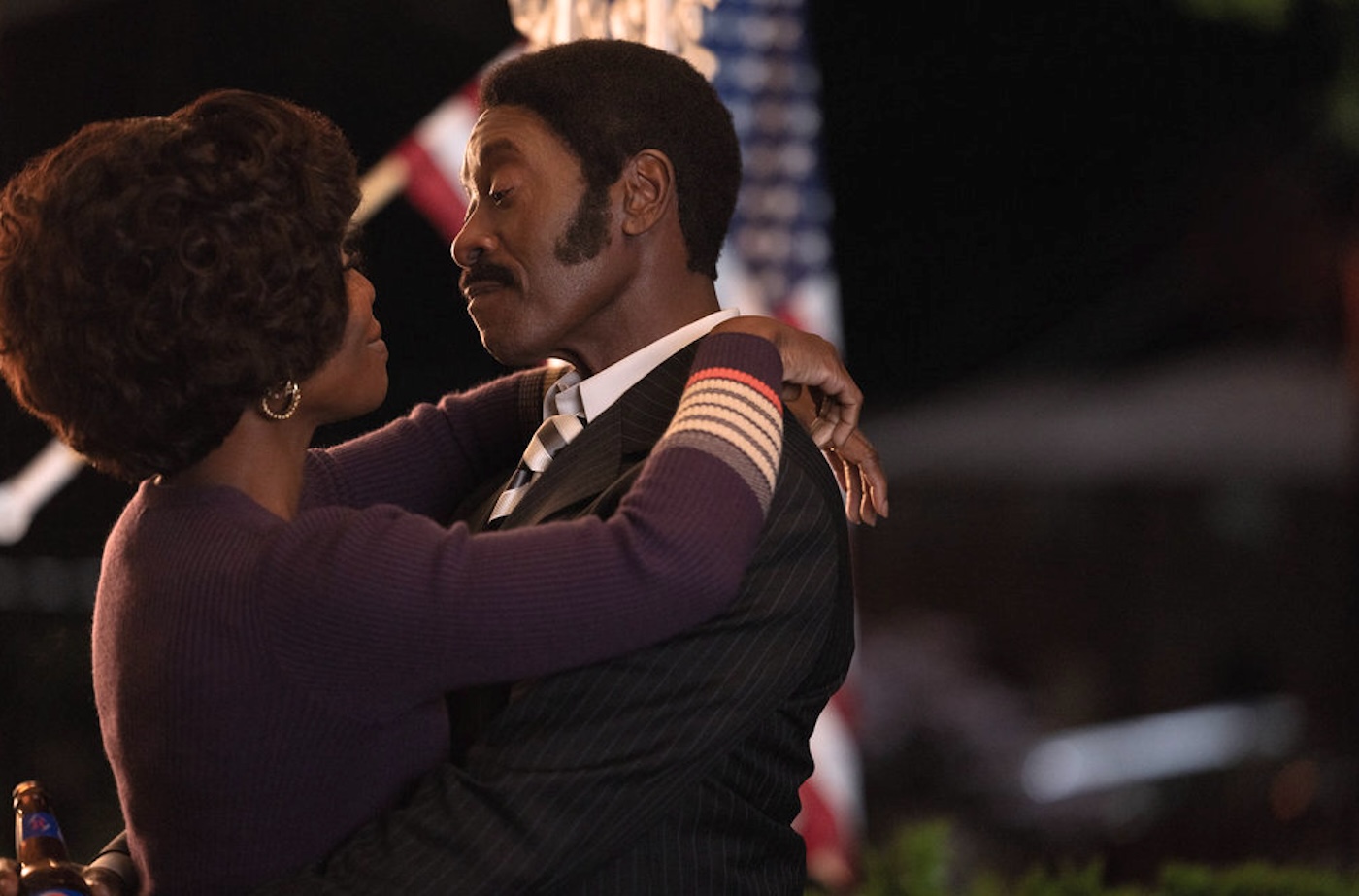
Local 600 Crew – Fight Night: The Million Dollar Heist
Directors of Photography: Joe “Jody” Williams, Michael Watson
A-Camera/Steadicam Operator: Xavier Thompson
A-Camera 1st AC: Jason Bonner
A-Camera 2nd AC: Cory Blake
B-Camera Operator: Brigman Foster Owns
Additional B-Camera Operator: Amber Burnett
B-Camera 1st AC: Stephen Early
Additional B-Camera 1st AC: Keith Huffmeier
B-Camera 2nd AC: Lauren Gentry
Additional B-Camera 2nd AC/Digital Utility: Bre Jones
Additional Digital Utility: Craig Hing
Loader: Ben McLeod
Additional Loader: Torey Lenart
Digital Imaging Technician: Joe Dare
Camera PA: Khadir Freeney
Unit Still Photographers: Eli Joshua Ade, Parrish Lewis, Fernando Decillis
Unit Publicist: Bo Shurling
